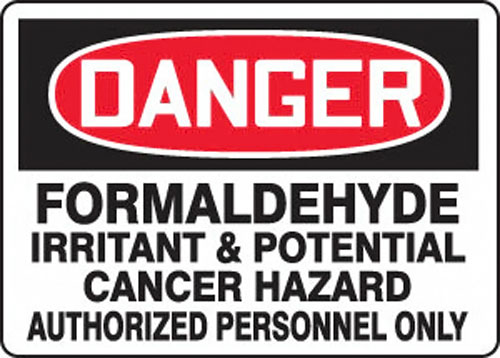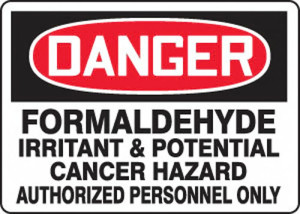This article contains affiliate links. If you make a purchase after clicking on a link I may earn a small commission at no extra cost to you.
 Formaldehyde, often known by its commercial name Formalin is carcinogenic .
Formaldehyde, often known by its commercial name Formalin is carcinogenic .
There is probably no chemical which is so omnipresent in our modern world.
Formaldehyde is insidious and complex in its effects.
Exposure to formaldehyde in products which leach into the air can irritate the throat, nose and eyes. Formaldehyde can also be responsible for such symptoms as dizziness, headaches, and fatigue. Formaldehyde allergy is very difficult to diagnose as there can be many other causes for these symptoms and signs. steps.
Formaldehyde has been shown to be responsible for cancer in laboratory animals; the US Environmental Protection Agency has classified formaldehyde as a probable human carcinogenic.
Formaldehyde Facts –
What is formaldehyde used for?
* Fertilizers
* Fungicides,
* Insecticides
* Glues
* Laminates,
* Certain varnishes
* Lacquers
* Medicated shampoos
* Germicidal soaps
* Mouthwashes
* Antiperspirants Deodorants
* Exhaust from cars without catalytic converters
* Tobacco products including Cigarettes, cigars & pipe
* Fuel in heating and cooking equipment – gas kitchen stoves, kerosene heaters and wood stoves
* Certain types of fabrics, drapes, and furniture.
* Some adhesives and glues, including those found in pressed wood products often referred to as chipboard or MDF (medium density fibreboard), plywood, panelling, and fibreboard
* Various paints, coatings, & cleaning products
* Certain types of insulation materials
* Rural use such treating footrot in sheep
Burning of organic matter:-
The burning of organic matter causes it to be given off in variable quantities.
This includes bonfires, internal combustion engines, cigarette and pipe smoke, coal fires, gas fumes, the roasting of coffee beans, the toasting and browning of food, incinerators, open fires, stoves and barbecues.
Textiles:-
Textiles are often treated with formaldehyde to improve the fastness of dyes, to make garments crease-proof, shrink-proof and waterproof and as part of the bleaching pre-treatment of wool.
Workers in the textile industry or clothing shops are particularly at risk, but you may be able to recognize the characteristic odor from your own wardrobe if you are familiar with it.
The smell of formaldehyde is given off as a vapour by many plastics and polymers, especially polyvinyl chloride (PVC), foam rubber (carpet backing, furniture padding) and expanded styrene.
Building Industry:-
Cavity wall insulation is carried out by means of expanded urea-formaldehyde foam in situ , and it continues to give off formaldehyde for many years, especially when heated. In extreme cases patients have had to move home because of illness due to this noxious agent.
Food is often directly contaminated with formaldehyde where it has been used as an insecticide and fumigant, as in storage and shipping or for sterilizing food containers.
Leather Tanning:-
The tanning of leather and vulcanization of rubber also involves the use of formaldehyde. One patient thought she was genuinely allergic to her husband until she discovered that it was his expensive leather coat that caused the trouble — she had given it to him as a birthday present.

Newspapers & magazines:-
Allergy to newspaper and printing inks, especially when fresh, is widely recognized, except by many of the unfortunate sufferers.Be suspicious if you sneeze when you open your daily rag: formaldehyde is the usual offending ingredient. Glossy or `specialty’ papers are worst in this respect, and new books often have a very characteristic odor.
Finally (no pun!), formaldehyde is used in embalming.
Check yourself for a possible formaldehyde allergy as described above.
When formaldehyde is present in air at levels exceeding 0.1 ppm, people may experience effects such as:-
- burning sensation to the throat, nose and eyes
- watery eyes
- coughing
- wheezing
- skin irritation.
Just like all allergens, there are some individuals that very sensitive to formaldehyde, whereas others will have minimal or no reaction to the same level of exposure.
Contact with Formalin should be avoided or kept to the barest minimum if possbile
Studies of humans suggest that that there is an association between formaldehyde exposure and certain types of cancer. The International Agency for Research on Cancer (IARC) has classified formaldehyde as a human carcinogen.

